From the 1970s to the 2010s, Helltown inspired countless urban legends about frightening ghosts, mutant snakes, and bloodthirsty killers — and it's not hard to see why.
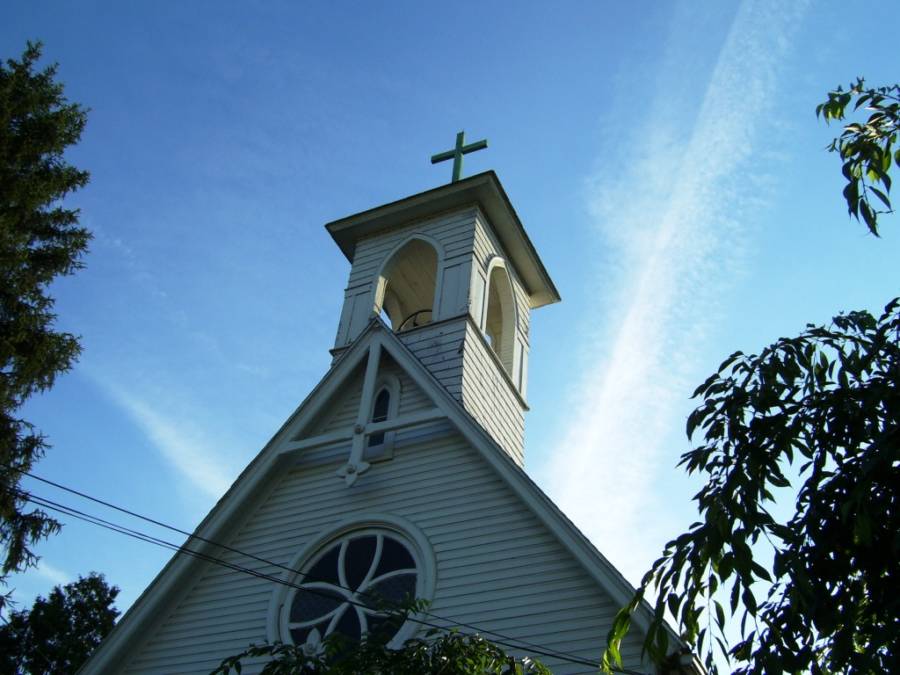
Flickr CommonsAn infamous church in Helltown, Ohio that was decorated with upside-down crosses.
Boston, Massachusetts is the most famous Boston in the U.S., but it’s not the only city to bear this name. In Ohio’s Cuyahoga Valley, there was once another Boston. Abandoned in the 1970s and recently demolished, this Boston was often known by a different name: Helltown.
Unlike the ghost towns of the West, this Midwestern town stood out because it didn’t appear all that old. Although some buildings included features that were common in early America, many structures clearly belonged in the late 20th century. The “No Trespassing” and “Road Closed” signs posted throughout the town were certainly modern — and official.
Until the town was demolished in 2016, there were still remnants of the lives the former residents left behind, including an abandoned school bus. But it was the town’s Presbyterian church that seemed to have inspired the name Helltown: The building was curiously decorated with upside-down crosses.
Just what happened to this town that led to its abandonment and eventual destruction? Why did the former Boston Village take on such a dark, foreboding name? There are numerous theories about what happened to Helltown, Ohio — some of which might send a chill up your spine.
The Rise And Fall Of Boston, Ohio
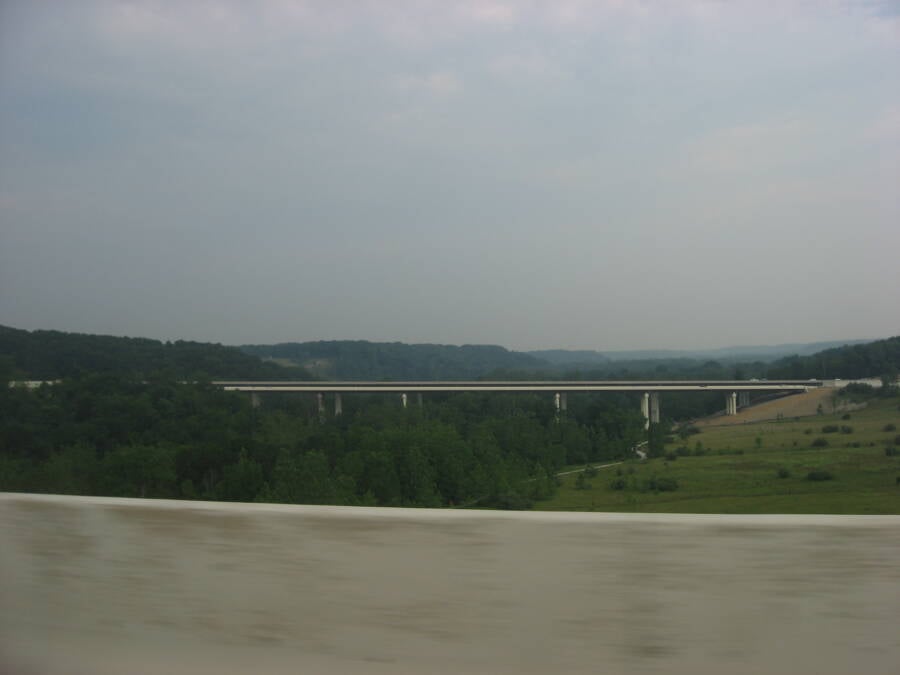
Wikimedia CommonsA modern viewpoint of Cuyahoga Valley National Park, where the former town of Boston was once located.
While the region is often remembered as Helltown today, it was once known as Boston Township or Boston Village. First surveyed by Alfred Wolcott of Connecticut and his colleague James Stanford in 1805, the settlers returned the next year to erect a cabin at the site of the future Boston Cemetery. This marked the beginning of a more permanent settlement in the region.
However, the township would not be recognized in an official capacity until January 15, 1811, when what was then known as Range 11, Town 4 of the Connecticut Western Reserve became Boston Township. The new name of the town was inspired by Boston, Massachusetts as a sort of testament to the fact that most of the settlers hailed from New England.
In its early years, the township’s economy was bolstered by the construction of the Ohio and Erie Canal between 1825 and 1827, which provided a vital transportation route for people and various goods. Ultimately, this led to economic growth in the region, drawing in more farmers and workers to aid in the transport of lumber, flour, quarried stone, bricks, and agricultural products to markets in places like Cleveland and Akron.
Then, by the 1850s, the village of Peninsula became the largest in the township. It was incorporated in 1859 and thrived thanks to its location near the canal, hosting boat yards, dry docks, hotels, and saloons catering to canal workers and travelers. The region saw another major change in 1880 upon the arrival of the Valley Railway, which marked the start of a notable shift from canal transport to rail transport. While this did open some new opportunities, it also contributed to the decline of the canal-based transport.
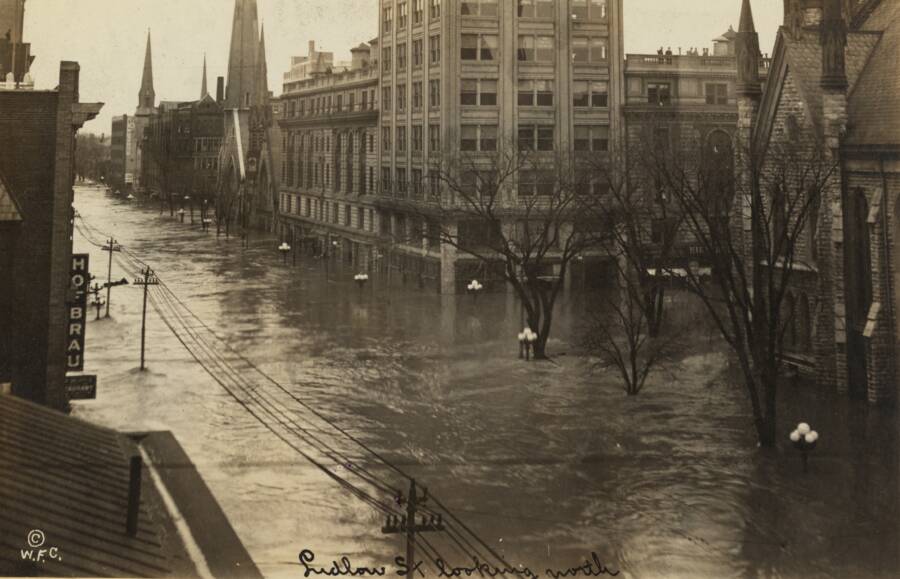
Public DomainThe impact of the Great Flood of 1913 in Dayton, Ohio.
This decline only continued in the 20th century. Traditional industries like quarrying saw a massive drop-off, and the Flood of 1913 dealt a significant blow to the Ohio and Erie Canal. By the 1920s, local quarries ceased operations, in large part thanks to the rising availability of concrete.
Eventually, in the 1970s, the American government decided that the land in Boston, Ohio would be well-suited for the Cuyahoga Valley National Recreation Area, later designated as the Cuyahoga Valley National Park. The National Park Service soon bought the properties of the town’s residents, leading to the locals being displaced, their homes being boarded up, and the eventual abandonment of the once-thriving township.
Although this seemed to be a relatively par-for-the-course story of a declining Rust Belt region, there were ominous rumors that began to swirl around this specific town’s decline, leading to the moniker “Helltown.”
But just what were those rumors, exactly?
Chilling Legends About Helltown’s Satanic Church, Haunted School Bus, And Crybaby Bridge
Before its demolition in 2016, visitors to Helltown were greeted with an eerie sight: an abandoned town where life had seemingly vanished out of thin air. Buildings were boarded up and signs were erected to warn visitors against trespassing, but a few landmarks stood out as particularly chilling.
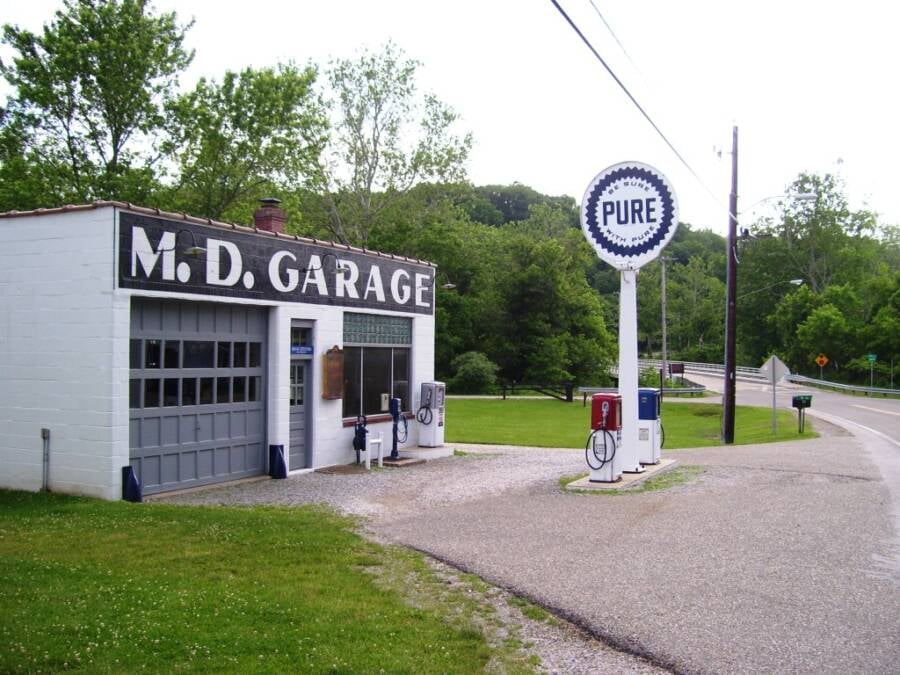
Flickr CommonsAn old, abandoned gas station in the town.
The first and most noticeable was easily the Presbyterian church that once stood tall above the town. The church was adorned, shockingly, with upside-down crosses — something not typical of most churches.
This strange, seemingly blasphemous detail led to rumors that the town’s locals had not been people of God, but rather Satanic practitioners who stalked the streets and attempted to lure in visitors with tales of their sinister practices. This rumor then led to chilling legends about animal mutilation and even human sacrifices being performed in the town.
In truth, the church had been designed in a Gothic revival style, in which it was fairly common to display crosses upside-down. Still, the church was probably not the only reason for Helltown’s frightening renaming.
Another point of fixation in the abandoned town was an old school bus that had been left to rust. The chilling image of an empty school bus led to further speculation that some terrible fate had befallen Boston Township.
Ghost hunters even claimed that they had seen the spirits of schoolchildren residing within the bus at certain points. According to legend, these schoolchildren were all murdered by a serial killer, and their spirits never left the vehicle. Supposedly, if you peered through the bus’ windows, you could see either the ghosts of the victims or their killer still sitting inside.
Once again, however, the truth is far less terrifying. In actuality, the bus was merely abandoned like the other buildings and structures in town. While there was a family living in the bus at one point, it was only because their house was being renovated and they had nowhere else to go.
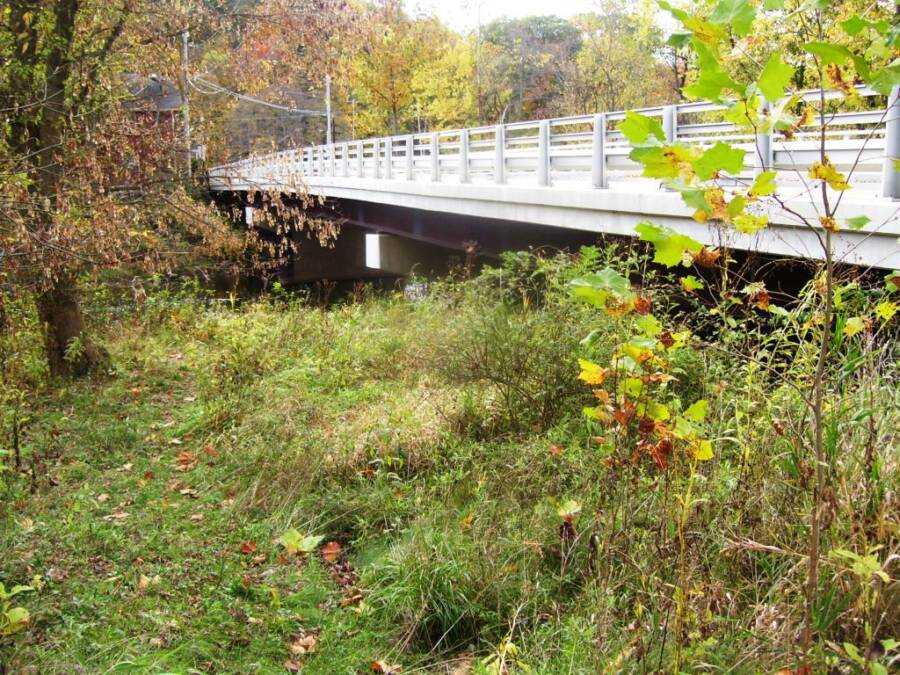
Flickr CommonsThe Crybaby Bridge in Helltown.
There was also a legend about a “Crybaby Bridge” in Helltown. According to lore, if you left your car on the bridge, you would return to find it covered in dust and children’s footprints. If you listened closely, some said, you could hear the cries of a baby who was purportedly thrown from the bridge.
Of course, there are similar legends about other Crybaby Bridges throughout the U.S., so it’s likely that this particular bridge was part of a larger mythological trend, rather than an actual haunted location.
The Peninsula Python And The End Of The World
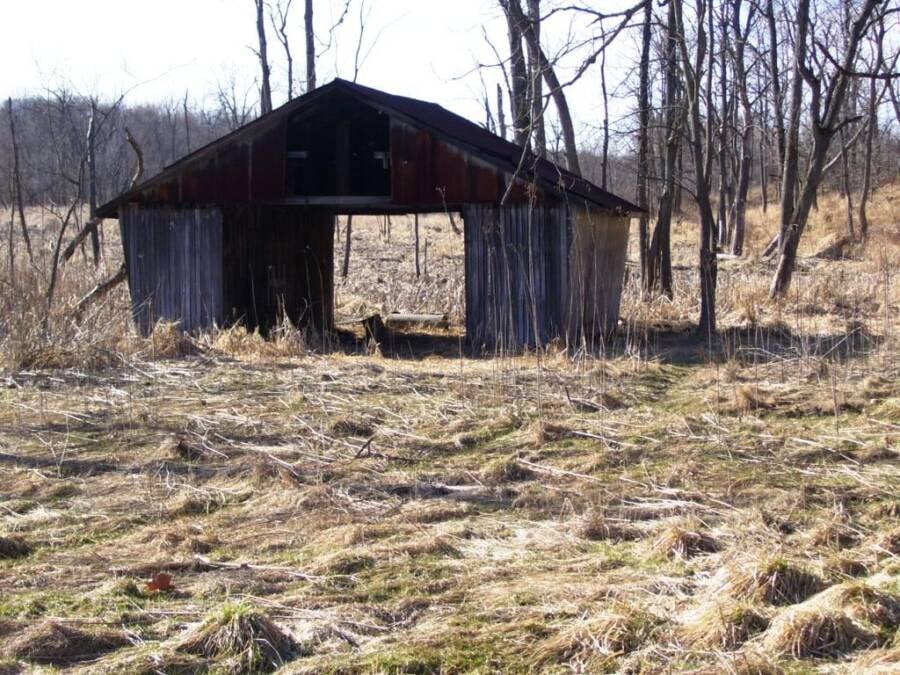
Flickr CommonsAn abandoned barn in Helltown.
There’s also an ominous legend that a chemical spill infested Helltown, leading to the creation of what locals called the “Peninsula Python.”
The tale says that an ordinary snake suddenly grew to a massive size and terrorized the region of Helltown. Rumored to be a mutant resulting from the toxic chemical spill, the creature has never actually been observed. But that lack of evidence has not stopped some people from speculating that that was the “real” reason why Boston, Ohio was abandoned — and that the government wanted to cover up the disaster that happened.
In reality, there were toxic chemicals uncovered in the nearby Krejci Dump, but this discovery was made in the 1980s, about a decade after it was decided that Boston, Ohio would become part of a larger park. Furthermore, there is no proof that these chemicals affected people or animals in the actual town. And rangers who visited the Krejci Dump site reported only typical illnesses and rashes — no frightening mutations.
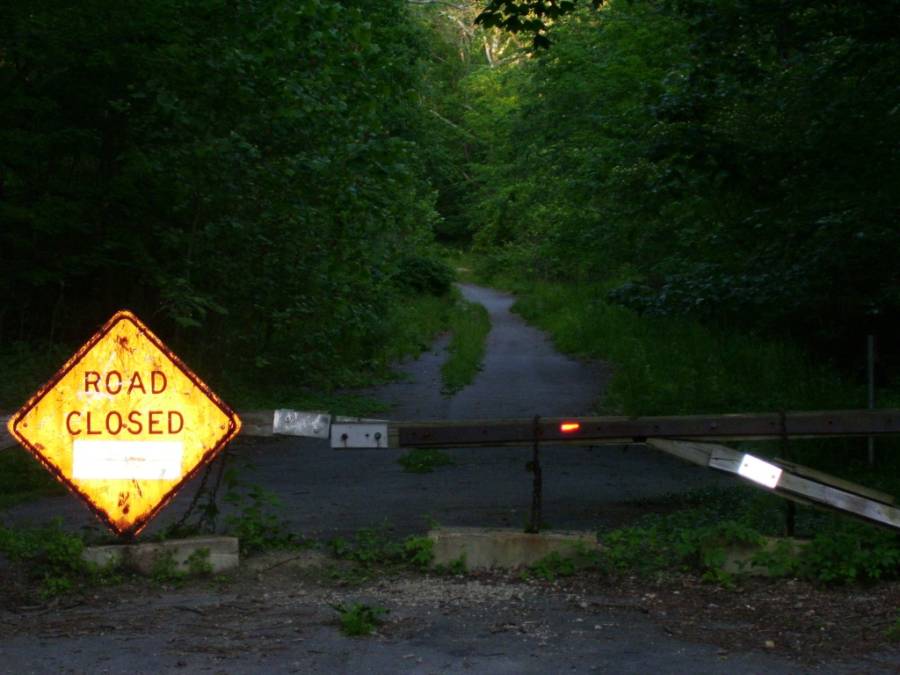
Flickr CommonsOne of the many closed-off roads that surrounded the former town of Boston, Ohio.
Lastly, there are legends about a location within Helltown known as “The End of the World.” The End of the World was one section of Stanford Road, which featured a steep incline and a sudden drop down, almost giving the impression that cars were driving off a cliff. Some have claimed that supernatural occurrences happened on that road, while others have alleged that the road was “evil” and caused deadly car crashes.
Once again, though, there are similar stories of other “Highways to Hell” or “Gates to Hell” across the world, and it’s more likely that the name was given to this stretch of road simply due to its eerie atmosphere, rather than anything paranormal. In fact, the same could be said of Helltown in general.
Why Helltown’s Real Story Might Be More Sad Than Spooky
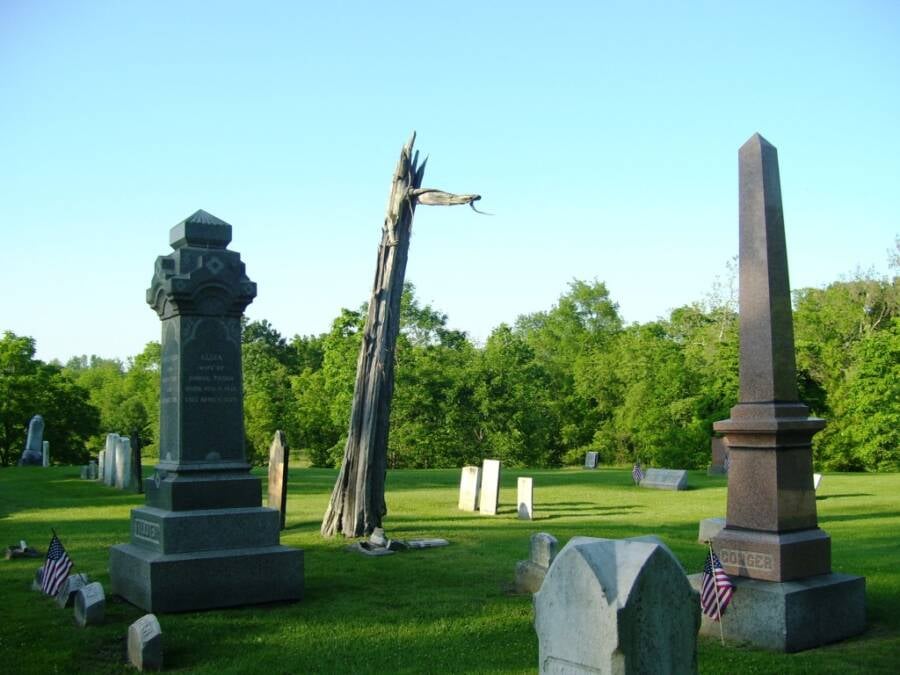
Flickr CommonsThe Helltown cemetery.
Helltown’s spooky name was likely the result of, rather than the source, of all these urban legends. The residents of Boston Township in Ohio were indeed forced to abandon their homes by the federal government, but not because of a chemical spill or a supernatural cover-up.
With national concerns about deforestation in full swing, in 1974, U.S. President Gerald Ford approved legislation that granted the National Park Service the power to expropriate land, theoretically to preserve the nation’s forests and establish new national parks throughout the country.
While the idea behind the bill may have been well-intentioned, it was bad news for residents living in areas designated by the National Park Service for new parks, including those who resided in Boston, Ohio.
The locals who resided in what’s now part of Cuyahoga Valley National Park had no choice but to leave after the government bought their properties.
It’s likely that these former residents became even more resentful when the government fell behind on the ambitious project, letting the town sit deserted for decades before it was finally demolished as planned.
One local made his feelings clear in a message he scrawled on a wall in one of the town’s abandoned homes: “Now we know how the Indians felt.”
Next, check out these seven creepy abandoned cities. Then, go inside the destruction of 11 historic American landmarks.





